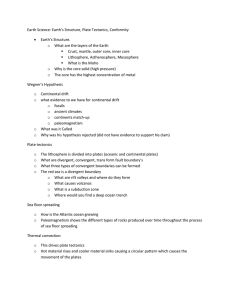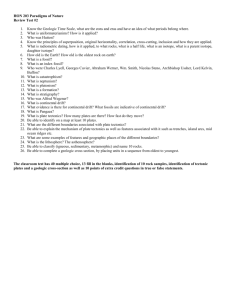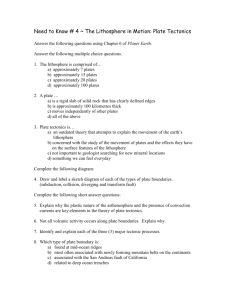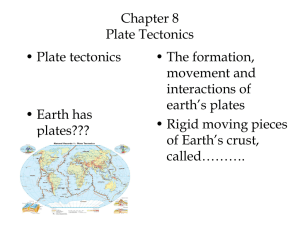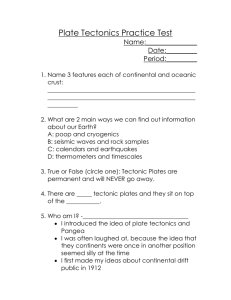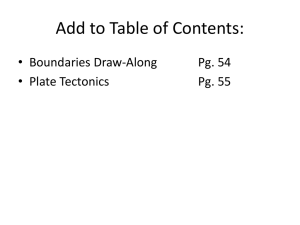PRE-POSTTEST
advertisement
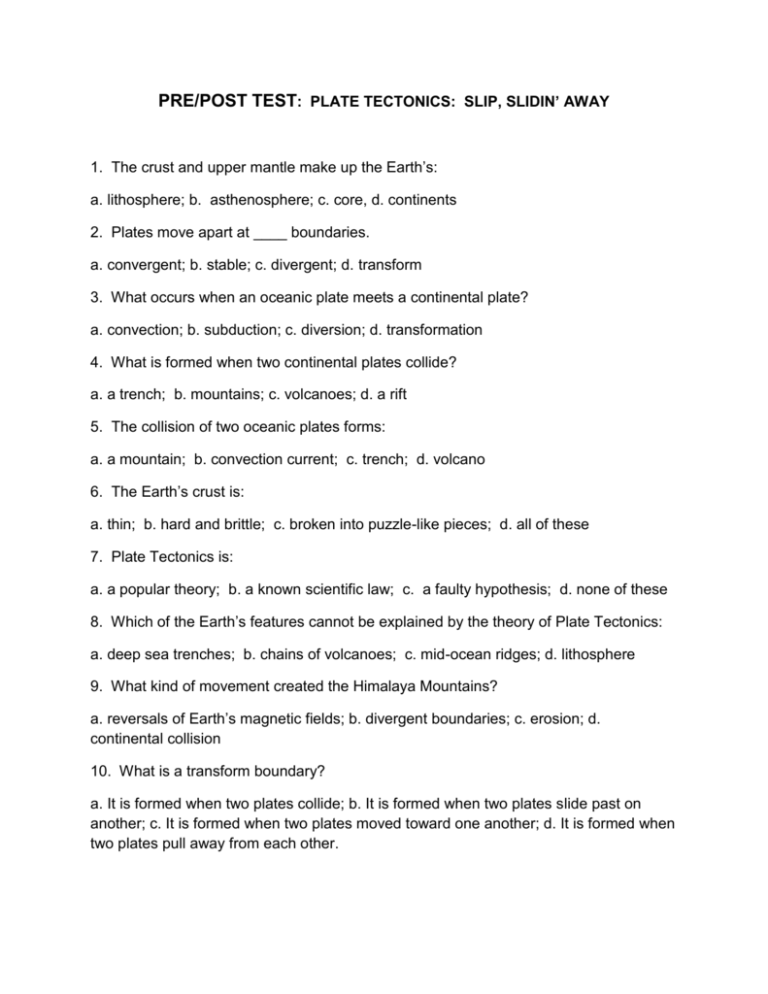
PRE/POST TEST: PLATE TECTONICS: SLIP, SLIDIN’ AWAY 1. The crust and upper mantle make up the Earth’s: a. lithosphere; b. asthenosphere; c. core, d. continents 2. Plates move apart at ____ boundaries. a. convergent; b. stable; c. divergent; d. transform 3. What occurs when an oceanic plate meets a continental plate? a. convection; b. subduction; c. diversion; d. transformation 4. What is formed when two continental plates collide? a. a trench; b. mountains; c. volcanoes; d. a rift 5. The collision of two oceanic plates forms: a. a mountain; b. convection current; c. trench; d. volcano 6. The Earth’s crust is: a. thin; b. hard and brittle; c. broken into puzzle-like pieces; d. all of these 7. Plate Tectonics is: a. a popular theory; b. a known scientific law; c. a faulty hypothesis; d. none of these 8. Which of the Earth’s features cannot be explained by the theory of Plate Tectonics: a. deep sea trenches; b. chains of volcanoes; c. mid-ocean ridges; d. lithosphere 9. What kind of movement created the Himalaya Mountains? a. reversals of Earth’s magnetic fields; b. divergent boundaries; c. erosion; d. continental collision 10. What is a transform boundary? a. It is formed when two plates collide; b. It is formed when two plates slide past on another; c. It is formed when two plates moved toward one another; d. It is formed when two plates pull away from each other.

